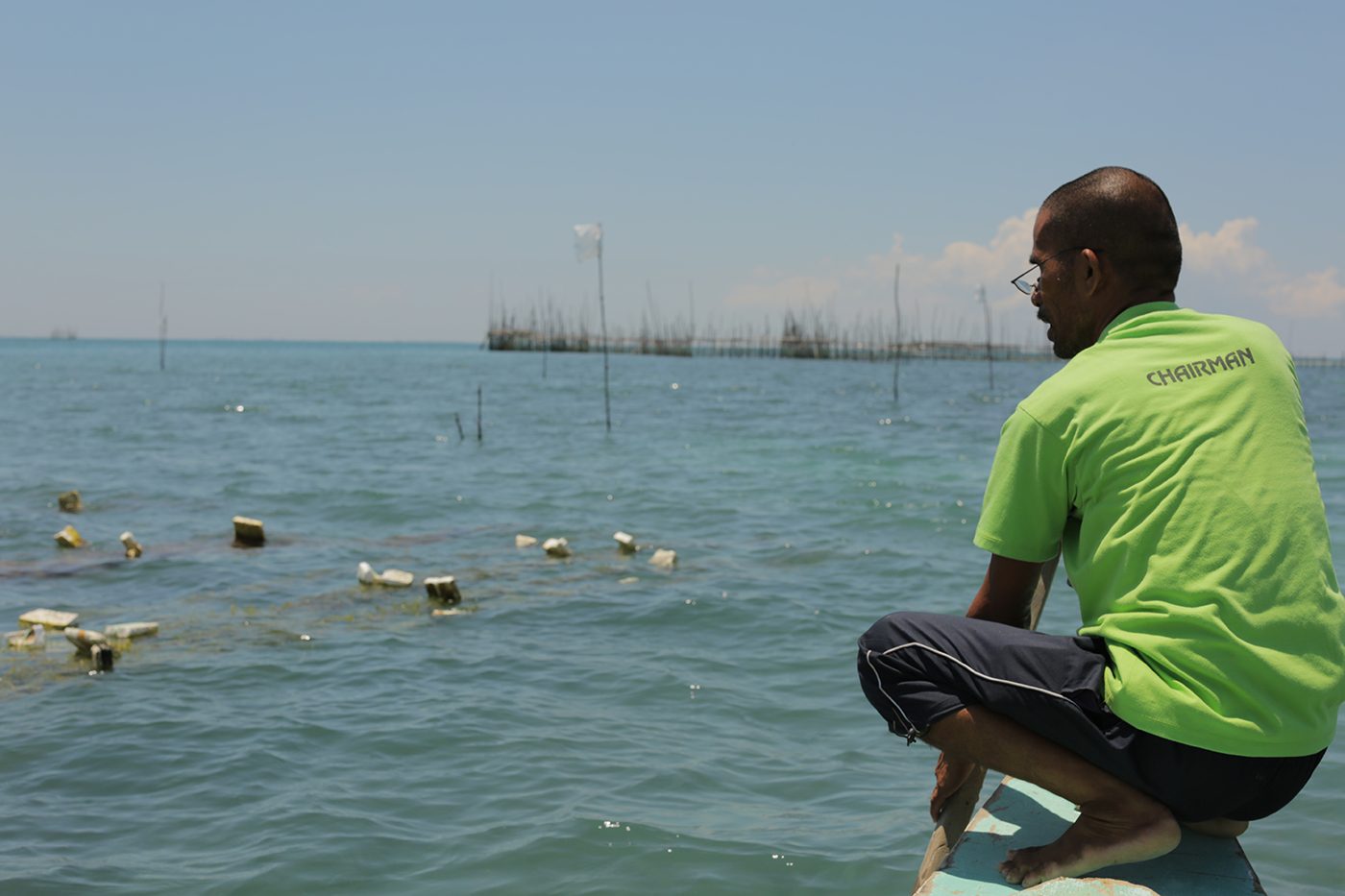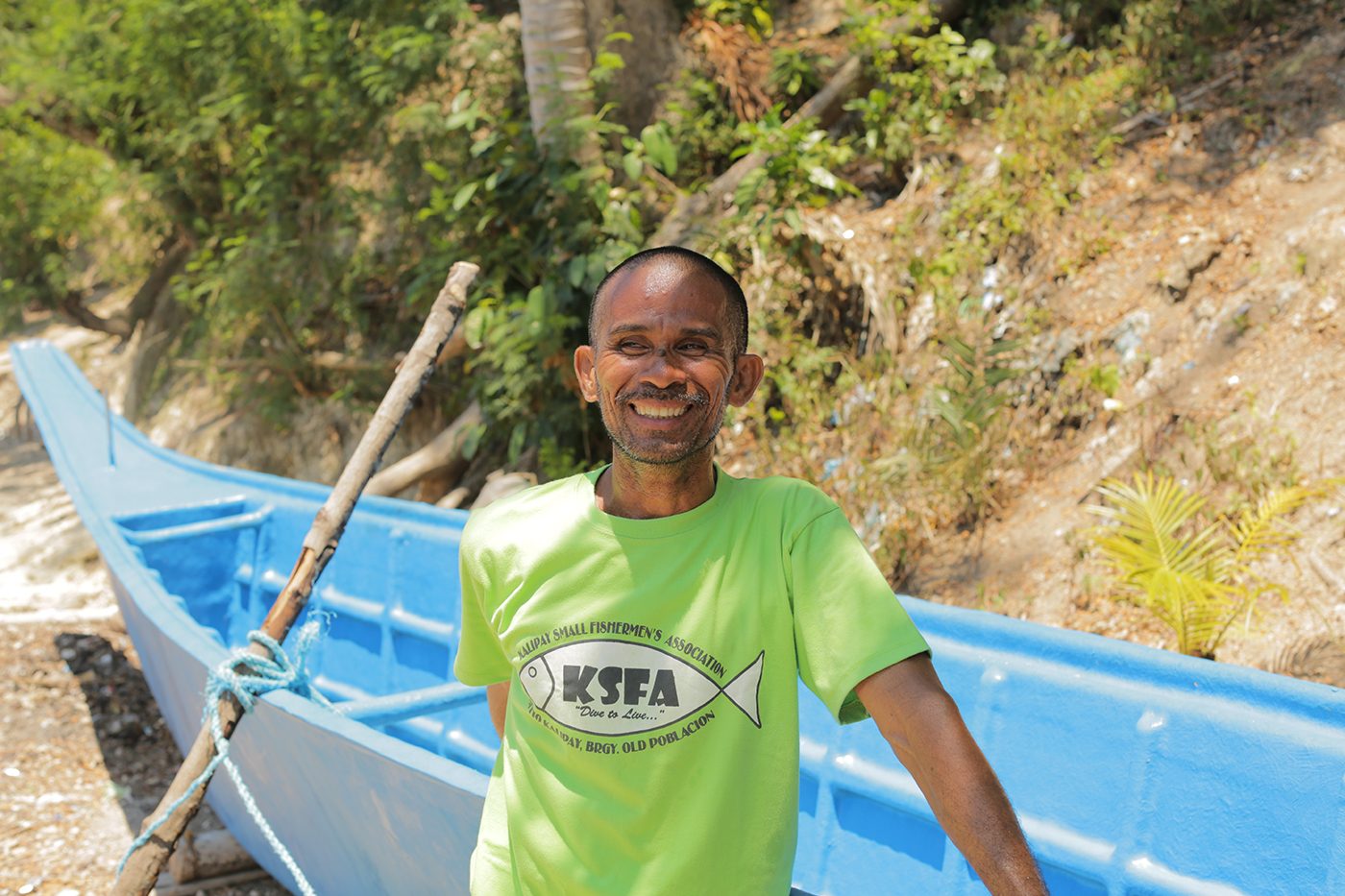SUMMARY
This is AI generated summarization, which may have errors. For context, always refer to the full article.

NEGROS OCCIDENTAL, Philippines – He was 7 when Abednigo Villacastin began to help his father at work.
His father was a fisherman, like his father before him. They would head out to sea at 3 pm and often stay out until 3 am. Villacastin, the eldest of 8 children, would then go to school. His mother kept his shorts warm and dry in a pot.
The walk to the grade school closest to Old Poblacion in Escalante, Negros Occidental, stretched 5 kilometers, but Villacastin was determined to go. He didn’t want to be like his father who couldn’t read or write. When he was old enough for high school, he went to Bacolod with the help of some relatives. He joined amateur boxing matches in the plaza whenever his allowance ran out. Despite all his efforts, a high school diploma eluded his grasp.
Yet Villacastin draws comfort from the fact that 4 of his younger siblings had an easier time in school. A vocational course brought him to a job in Manila, where he spent 5 years until his way of life proved too exhausting. Shortly after his return to Escalante, a girl he had known since childhood caught his eye. Even better, the girl’s father approved. Abednigo and Marites, both born and raised in Sitio Kalipay, have been married since 1994.
“I would not have made it without her,” Villacastin said. “She has shared all my burdens.”
Now 51, Villacastin leads a busy life. He leads the Kalipay Small Fishermen’s Association, which he began organizing in 2013, just before he turned 46.
“I saw that middlemen were profiting the most from the work of small fishermen. They used to control our prices,” he said. “We put an end to that.”
He serves as chairman of Escalante’s Fisheries and Aquatic Resources Management Council. That and the association’s projects fill his days. He spends so many hours out in the sunshine that sometimes his wife can barely see him, he joked. “Ngipon na lang ang magputi (My teeth are the only part of me that’s easily visible).”
Following the rhythm of the tides, Villacastin and his association members go out to fish or tend to their seaweed farms. They raise Eucheuma spinosum, which yields carrageenan, a thickening agent in toothpaste, gel, and some food items like chocolate milk. They maintain a 50-hectare mangrove nursery, for which the environment department gave them P1.2 million. At the time of Villacastin’s interview in the middle of May 2019, the association had just received a 30-foot fiberglass boat from the Bureau of Fisheries and Aquatic Resources. They planned to use it to tow their floating cottage.
Along with a floating fish cage, this cottage was supposed to serve as a training center in Sitio Kalipay’s mariculture park. Seeing an opportunity, Villacastin persuaded the local tourism office to let the association rent out the floating cottage to tourists. He won approval, but on the condition that he and his members had to be trained in lifesaving and CPR. Since 2018, the association has been earning around P30,000 a month from tourists who rent the cottage for day trips to a sandbar and other nearby attractions. The venture is doing so well that the fishermen of Sitio Kalipay want two more floating cottages soon, for which they’ll need around P300,000.
A dream of education
Community-based tourism has freed Villacastin and his allies from the anxiety caused before by rampant commercial fishing, but they’ve had to work hard for every project. The wait for their newest boat lasted for 3 years. But Villacastin pointed out that his second child, now a certified public accountant (CPA), has helped him prepare the proposals and other paperwork that each project requires.
All 4 of Abednigo and Marites’ children are college-educated; aside from the CPA, there is a teacher, a commerce graduate, and a criminology major. Although they help the couple with their seaweed farm and other association activities, their lives are much easier – free from the hardship that their father had to overcome in his early years.
Hardship, however, has failed to make a cynic out of Villacastin. His organization faces tough challenges like raising enough capital for their members to fish or grow seaweed. But instead of complaining or finding someone to blame, Villacastin has figured out how to raise funds. The group sustains a microlending program and sells staples like rice, from which the organization collects P200 per sack. Half of the amount goes to capital, while the other half is kept safe for the member himself.
It was in 1991 when Villacastin first organized a fishermen’s cooperative, but the group broke apart in 2011 when two of its chapters decided to align themselves with different local politicians and parties. Those who remained with Villacastin agreed to put up P1,000 each as share capital. At first there were 79 of them, all fathers. While only 40 have remained as of May 2019, they are committed members. Their group now includes women.
When the group crafted their bylaws, they agreed to organize one chapter in each of Escalante’s 7 coastal barangays. So far, they’ve started 3. Villacastin remains optimistic they can keep on growing. It is an outlook worthy of someone named after an Old Testament character who stood in the flames as ordered by a king of Babylon, and survived.

A deep connection
“I depend on the sea for a living,” said Villacastin. The father of 4 also depends on his children for help in cleaning their seaweed farm. From his backyard in Sitio Kalipay (one of the Bisaya terms for “joy”), one can see the group’s mangrove nursery and floating cottage, as well as its boats. During Villacastin’s interview last May, the new boat’s 85-hp engine, which the association had bought for P36,000, rested under a tin roof. It will be powerful enough to tow a cottage full of tourists to a nearby sandbar. Etched on the stone steps leading down to the shore from Villacastin’s backyard are the words “Donated by Vice Mayor Yap.”
Villacastin’s skills as a leader among Sitio Kalipay’s fishermen include seeking and applying for government funds and other resources. At least 3 organizations had submitted proposals for the new boat, so Villacastin and his allies were pleased when it finally reached them after 3 years.
Ecotourism is encouraged in communities near marine protected areas not only because it generates funds (from divers’ and other users’ fees, for instance), but also because it supports fishermen who want to supplement their income. Villacastin’s members take turns using the floating cottage. Like seaweed farming, guiding tourists allows them to earn something without putting further pressure on Tañon Strait’s fish stocks. Support for livelihoods that are aligned with conservation is an important factor.
Villacastin credits Oceana and other groups for teaching him about leadership and conservation and, more importantly, campaigning to restrict commercial fishermen’s access to the Tañon Strait protected seascape. As chairman of Escalante’s fisheries council, he’s hopeful that the new officials elected in the May 2019 elections would not side with commercial fishermen.
“Commercial fishing used to be so rampant here,” Villacastin said. With the gains some of its communities have achieved in fisheries regulation, mangrove management, and law enforcement, it would be a pity if Escalante were to fall back. – Rappler.com
Isolde D. Amante is a writer who lives in Cebu. She thanks Oceana Philippines for the opportunity of meeting some truly inspiring fishermen and community leaders in the Visayas.
Read more from this series:
Add a comment
How does this make you feel?
There are no comments yet. Add your comment to start the conversation.